
Palmaria palmata, also called dulse, dillisk or dilsk, red dulse, sea lettuce flakes, or creathnach, is a red alga (Rhodophyta) previously referred to as Rhodymenia palmata. It grows on the northern coasts of the Atlantic and Pacific Oceans. It is a well-known snack food. In Iceland, where it is known as söl, it has been an important source of dietary fiber throughout the centuries.

Ceramium is a genus of Ceramium algae. It is a large genus with at least 15 species in the British Isles.

Gastroclonium reflexum is a small red alga (Rhodophyta) reported from Ireland and Britain.
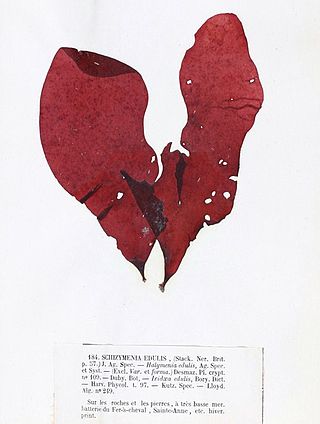
Dilsea carnosa, commonly known as the poor man's weather glass or the sea belt, is a species of red algae in the Dumontiaceae family of the order Gigartinales.

Dumontia contorta is a relatively small epiphytic algae of the sea-shore.
Schottera nicaeensis is a species of red algae (Rhodophyta) similar to other small red algae particularly Phyllophora.

Polysiphonia lanosa is a common species of the red algae (Rhodophyta) often to be found growing on Ascophyllum nodosum.
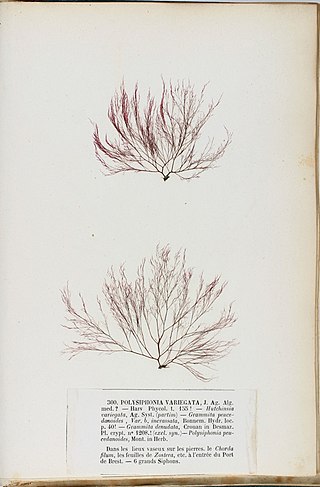
Polysiphonia denudata is a small red alga, Rhodophyta, growing as tufts up to 20 cm long without a main branch axis.
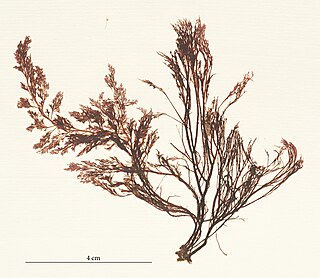
Polysiphonia elongata is a small red marine algae in the Rhodophyta.
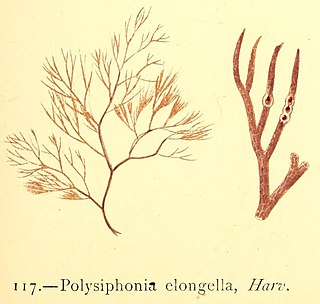
Polysiphonia elongella Harvey in W.J. Hooker is a branched species of marine red algae in the genus in the Polysiphonia in the Rhodophyta.

Melanothamnus harveyi, Harvey's siphon weed, is a small marine red alga in the division of Rhodophyta.

Choreocolax polysiphoniae is a minute marine parasitic alga in the division Rhodophyta.

Ceramium echionotum is a small marine alga in the division Rhodophyta.

Ceramium shuttleworthianum is a small marine red alga.
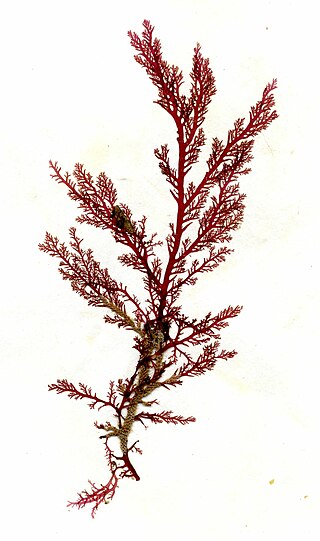
Plocamium cartilagineum is a medium-sized red marine alga.

Phyllophora crispa is a medium-sized fleshy, marine red alga. This alga forms dense mats of up to 15 cm thickness, which influence environmental factors, thus creating habitat for several associated organisms.
Phyllophora pseudoceranoides, the stalked leaf bearer, is a small marine red alga.

Phyllophora sicula, the hand leaf bearer, is a small red marine alga.

Polyides rotunda is a species of small red marine alga in the family Polyidaceae.
Gastroclonium reflexum is a small red marine seaweed.

















